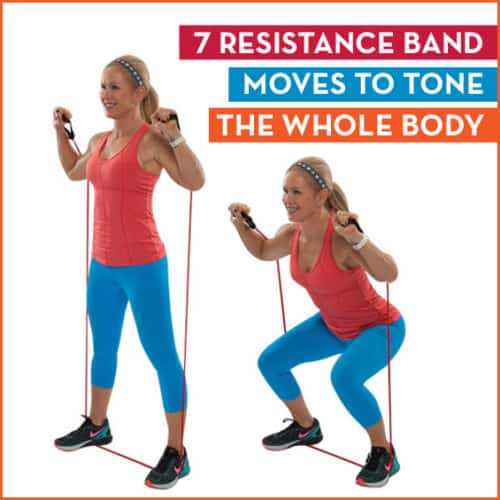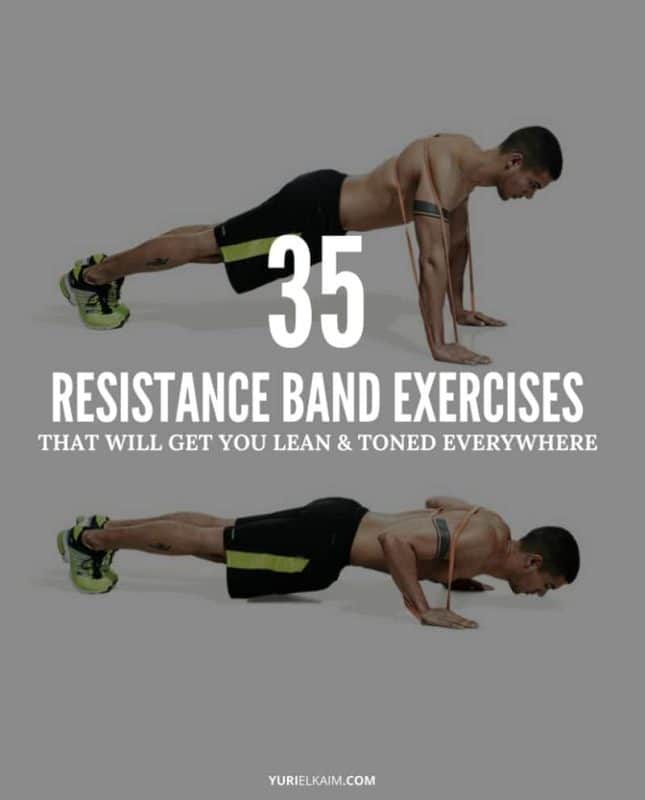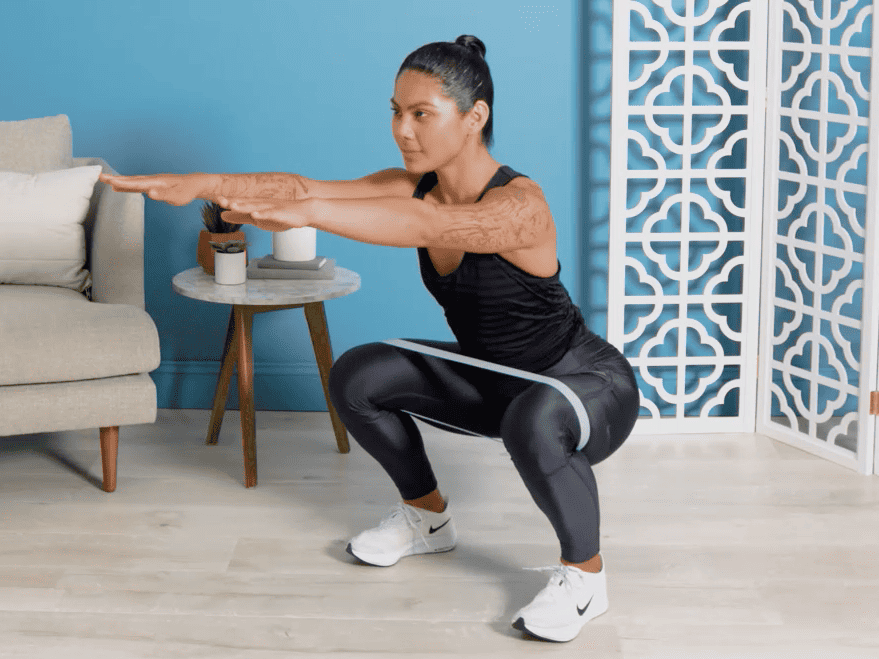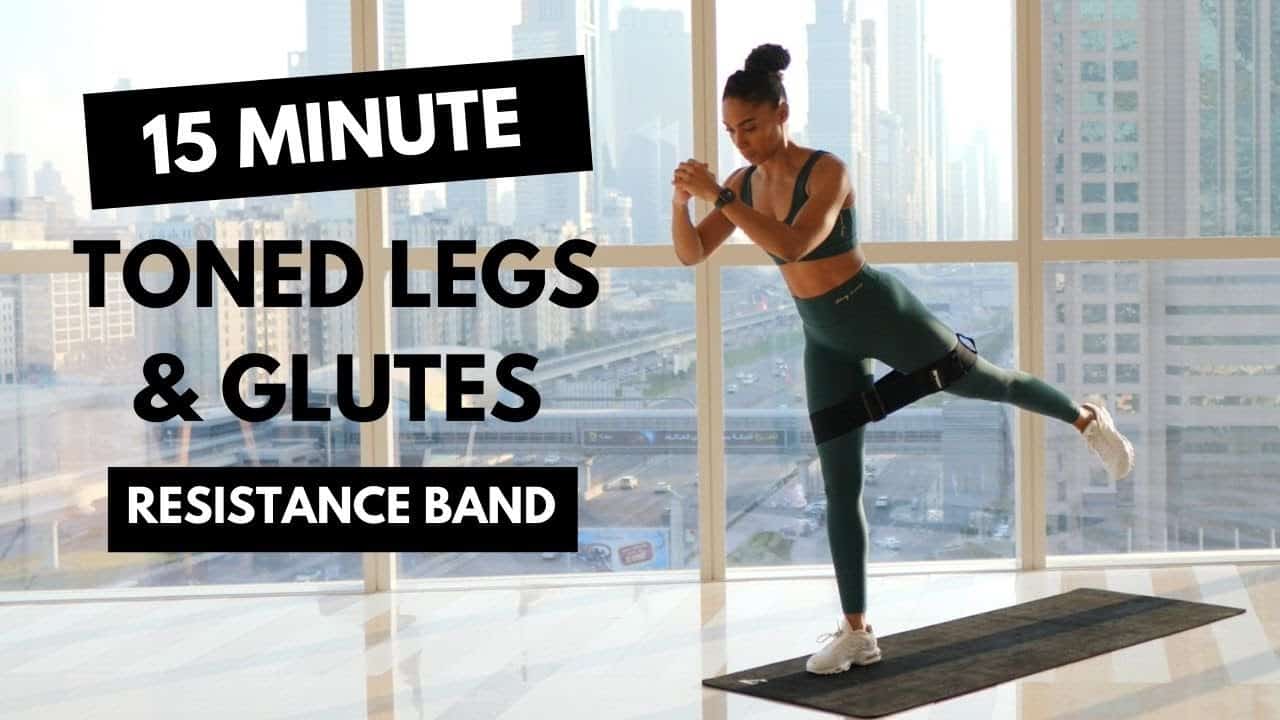resistance bands
Can Resistance Bands Help You Get Toned?
If you’re on a quest to achieve a toned physique, you may have come across resistance bands as a potential tool to help you reach your goals. But do they really live up to the hype? It turns out, resistance bands can be a powerful addition to your workout routine, offering a versatile and effective way to strengthen and tone your muscles. In this article, we’ll explore how resistance bands work, the benefits they provide, and how you can incorporate them into your fitness regime for optimal results.
Benefits of Resistance Bands
Resistance bands offer several benefits that make them a popular choice for fitness enthusiasts. Whether you are a beginner or an experienced athlete, incorporating resistance bands into your exercise routine can yield impressive results. So, let’s explore the various benefits of using resistance bands.
Versatility
One of the biggest advantages of resistance bands is their versatility. These bands come in different lengths, widths, and levels of resistance, allowing you to customize your workouts according to your fitness goals and preferences. With resistance bands, you can target specific muscle groups, increase or decrease resistance, and perform a wide range of exercises, including upper body, lower body, and core workouts. This versatility makes resistance bands suitable for various fitness activities, such as strength training, rehabilitation, and injury prevention.
Convenience
Resistance bands are incredibly convenient and can be used anywhere, anytime. Unlike traditional weights, you don’t need a bulky gym setup or a dedicated space to perform resistance band exercises. These lightweight and portable bands can be easily folded and tucked into your bag, making them perfect for traveling or working out on the go. Moreover, resistance bands don’t require any complex setup or additional equipment, allowing you to get a full-body workout in the comfort of your own home.
Affordability
If you’re on a tight budget or looking for cost-effective fitness equipment, resistance bands are a great option. Compared to expensive gym memberships or heavy weights, resistance bands are affordable and offer excellent value for money. You can find high-quality bands at a fraction of the cost of other exercise equipment. Investing in resistance bands allows you to enjoy the benefits of resistance training without breaking the bank.
Suitable for All Fitness Levels
Resistance bands are suitable for individuals of all fitness levels, from beginners to advanced athletes. Unlike heavy weights that may be intimidating for beginners or people with limited strength, resistance bands provide a gradual progression of resistance. You can easily start with bands that offer lighter resistance and gradually increase the intensity as your strength and fitness levels improve. With various resistance levels available, resistance bands can be tailored to meet the needs of everyone, regardless of their current fitness level.
How Resistance Bands Work
To understand the effectiveness of resistance bands, it is essential to grasp how they work. Resistance bands operate on the principle of creating tension against your muscles, challenging them to work harder and become stronger.
Muscle Activation
Using resistance bands activates your muscles in a unique way. The tension created by the bands forces your muscles to work against resistance throughout the entire range of motion in a particular exercise. This results in enhanced muscle activation and recruits more muscle fibers, leading to greater gains in strength and tone.
Progressive Resistance
resistance bands provide progressive resistance, meaning that the resistance increases the further the band is stretched. This progressive resistance mirrors the natural strength curve of your muscles. As you extend a resistance band, it becomes more difficult to stretch, increasing the intensity of the exercise. This progressive resistance helps you build strength and endurance, allowing you to continuously challenge your muscles and avoid plateaus in your fitness journey.
Full Range of Motion
Another advantage of resistance bands is that they allow for a full range of motion during exercises. Unlike certain weightlifting exercises that may limit your range of motion or put excessive stress on specific joints, resistance bands allow you to perform exercises through their complete range. This helps improve flexibility, joint stability, and overall functional fitness.
Types of Resistance Bands
Resistance bands come in different types, each offering its unique features and benefits. Let’s take a closer look at the various types of resistance bands available.
Loop Bands
Loop bands, also known as mini bands or booty bands, are versatile and easy to use. These bands are usually flat and form a continuous loop. Loop bands are commonly used for activating the muscles in the hips, glutes, and thighs. They can also be utilized for stretching exercises, yoga, and pilates. The different resistance levels of loop bands allow you to customize your workouts and gradually increase the intensity as you progress.
Tube Bands
Tube bands, also called fitness or resistance tubes, consist of a long and flexible tube with handles attached to each end. These bands usually come with interchangeable handles, ankle straps, or door attachments, giving you a variety of exercise options. The handles provide a secure grip, allowing you to perform a wide range of upper and lower body exercises. The varying levels of resistance tubes make them suitable for beginners and experienced individuals alike.
Figure Eight Bands
Figure eight bands, as the name suggests, have a figure-eight shape and are commonly used for strength routines. These bands provide resistance through both pulling and pushing movements, making them ideal for targeting the muscles in your arms, chest, back, and shoulders. The figure-eight design allows for a better grip during exercises, providing stability and control.
Therapy Bands
Therapy bands, also known as rehab bands or resistance strips, are specifically designed for rehabilitation and physical therapy purposes. These bands are typically made of soft and latex-free material, making them gentle on the skin. Therapy bands are commonly used for injury prevention, post-injury rehabilitation, and improving mobility. They offer a lower level of resistance and are ideal for individuals recovering from injuries or those with limited mobility.
Resistance Bands vs. Traditional Weights
Resistance bands offer several advantages over traditional weights, making them a compelling alternative or complementary tool in your fitness routine. Let’s compare the benefits of resistance bands with traditional weights.
Muscle Activation
Both resistance bands and traditional weights can effectively activate your muscles. However, resistance bands have an edge in terms of muscle activation throughout the entire range of motion. Traditional weights, such as dumbbells or barbells, often rely on gravity and momentum, which can result in diminished muscle activation during certain exercises. In contrast, resistance bands maintain consistent tension, keeping your muscles engaged throughout the exercise.
Joint Stress
Another significant advantage of resistance bands is the reduced stress on your joints. Traditional weights, especially when used improperly or with excessive loads, can place significant stress on your joints, potentially leading to injuries. Resistance bands offer a gentler resistance, reducing the impact on your joints and decreasing the risk of joint strain or discomfort. This makes resistance bands a safer option for individuals with joint issues or those recovering from injuries.
Controlled Movements
Resistance bands allow for greater control and stability during exercises compared to traditional weights. The linear tension provided by resistance bands helps stabilize your movements, promoting proper form and technique. This is particularly beneficial for beginners or individuals with limited experience in strength training, as it helps prevent improper lifting techniques that can lead to injuries.
Portability and Storage
When it comes to convenience and portability, resistance bands clearly outshine traditional weights. Resistance bands are compact, lightweight, and easy to store, making them perfect for individuals with limited space or those who are frequently on the go. Unlike heavy weights that require a dedicated storage area, resistance bands can be neatly folded and stored in a small bag or drawer. Their portability allows you to exercise anywhere, whether it’s in the comfort of your home, a hotel room, or even outdoors.
Using Resistance Bands for Toning
Resistance bands are highly effective for toning your muscles and achieving a lean and defined physique. Here’s how incorporating resistance bands into your workouts can help you achieve your toning goals.
Targeting Specific Muscle Groups
Resistance bands allow you to specifically target individual muscle groups in your body. By adjusting the placement and tension of the band, you can isolate and engage specific muscles during exercises. This targeted approach helps you focus on areas that you want to tone, such as your glutes, thighs, arms, or abs. Whether you’re aiming for sculpted arms or a firm booty, resistance bands offer endless possibilities for targeting specific muscle groups.
Muscle Toning and Definition
Resistance bands provide the resistance necessary to challenge your muscles and promote muscle growth, resulting in toning and definition. As you perform exercises with resistance bands, the bands create tension that places stress on the muscles, causing them to adapt and become stronger. This process promotes muscle growth and creates a lean and toned appearance over time.
Increasing Muscular Endurance
Toning your muscles requires not only strength but also endurance. Resistance bands can help improve your muscular endurance, allowing you to perform exercises for longer periods without fatigue. The progressive resistance provided by resistance bands gradually increases the demand on your muscles as they adapt and become stronger. As your muscles gain endurance, you’ll be able to perform more repetitions and sets, ultimately leading to increased toning and definition.
Toning Exercises with Resistance Bands
Now that you understand the benefits of resistance bands for toning, let’s explore some effective exercises you can incorporate into your workout routine. These exercises target different muscle groups and can be modified based on your fitness level.
Squats
Squats are excellent compound exercises that engage your lower body, including your quadriceps, hamstrings, and glutes. To perform a squat with resistance bands, place the band above your knees or under your feet and hold the handles or loop it over your shoulders. Stand with your feet shoulder-width apart and perform a squat by bending your knees, keeping your chest lifted and your weight on your heels. The resistance provided by the band intensifies the exercise, making it more challenging and effective for toning your lower body.
Lunges
Lunges primarily target your glutes, quadriceps, and hamstrings, helping you tone and strengthen your legs. Start by standing with one foot forward and the other foot positioned behind you, maintaining proper alignment. Place the resistance band under your front foot, holding the handles or looping it over your shoulders. Lower your back knee toward the ground, bending both knees to a 90-degree angle. Push through your front heel to return to the starting position. The resistance from the band adds an extra challenge, intensifying the lunge and toning your leg muscles.
Bicep Curls
Bicep curls with resistance bands effectively target your biceps, the muscles on the front of your upper arms. Stand on the center of the resistance band, holding the handles with your palms facing forward. Keep your elbows close to your sides and curl your hands toward your shoulders, contracting your biceps. Slowly lower your hands back to the starting position while maintaining tension in the band. The resistance bands allow you to strengthen and tone your biceps while improving your grip strength.
Tricep Extensions
Tricep extensions focus on toning the muscles on the back of your upper arms. Stand on the center of the resistance band and hold the handles with your palms facing down. Extend your arms overhead, keeping your elbows close to your ears. Slowly fold your elbows, bringing your hands behind your head or neck, while maintaining tension in the band. Extend your arms back up, fully contracting your triceps and returning to the starting position. The resistance from the band challenges your triceps, helping you achieve that toned and defined look.
Shoulder Press
Shoulder presses with resistance bands help strengthen and tone your shoulder muscles, specifically the deltoids. Start by standing on the center of the band and hold the handles or loop it around your hands. Start with your hands at shoulder height, palms facing forward. Press your arms upward until they are fully extended overhead. Slowly lower your arms back down to the starting position, maintaining tension in the band. The resistance provided by the band engages your shoulder muscles, helping you achieve well-defined and sculpted shoulders.
Chest Press
Chest presses target your chest muscles, including the pectoralis major and minor. While lying on your back, loop the resistance band around your upper back and hold the handles in each hand. Start with your arms bent at a 90-degree angle, elbows in line with your shoulders, and palms facing forward. Push the handles away from your chest until your arms are fully extended, maintaining tension in the band. Slowly bring your arms back to the starting position. The resistance bands simulate the movement of a traditional chest press exercise, allowing you to tone and strengthen your chest muscles effectively.
Rows
Rows primarily target your back muscles, including the latissimus dorsi and rhomboids. Anchor the resistance band securely to a stable object or use a door attachment. While standing or sitting, hold the handles and keep your arms fully extended in front of you. Pull the band toward your chest by retracting your elbows and squeezing your shoulder blades together. Slowly release back to the starting position, maintaining tension in the band. The resistance bands provide a challenging rowing motion, helping you improve your posture and achieve a toned back.
Glute Bridge
The glute bridge exercise is excellent for targeting your glutes and strengthening your lower back and hamstrings. Lie on your back with your knees bent and feet flat on the ground, hip-width apart. Place the resistance band just above your knees and engage your core muscles. Press through your heels, lifting your hips off the ground until your body forms a straight line from your shoulders to your knees. Squeeze your glutes at the top and slowly lower down to the starting position. The resistance band adds an extra challenge to the glute bridge, helping you tone and sculpt your glute muscles effectively.
Crunches
Crunches are classic abdominal exercises that help strengthen and tone your core muscles. Start by lying on your back with your knees bent and feet flat on the ground. Wrap the resistance band around your upper back, crossing it over your chest. Place your hands lightly behind your head to support your neck. Engage your core muscles and slowly curl your shoulders off the ground, bringing your chest toward your knees. Lower back down to the starting position while maintaining tension in the band. The resistance from the band intensifies the crunch, making it more challenging and effective for toning your abs.
Plank
The plank is a highly effective whole-body exercise that engages and tones various muscle groups, including your abs, back, arms, and legs. Start on all fours and extend your legs straight behind you. Place the resistance band just above your wrists, keeping your hands shoulder-width apart. Engage your core, ensuring your body forms a straight line from your head to your heels. Hold this position for a set amount of time or a specific number of breaths. The resistance band creates additional resistance, challenging your stability and enhancing the toning benefits of the plank exercise.
Creating a Resistance Band Workout Routine
To maximize the benefits of resistance band training and achieve your desired results, it’s essential to create a well-rounded workout routine. Here are some factors to consider when creating your resistance band workout routine.
Targeted Muscles
Identify the specific muscle groups you want to focus on during your resistance band workouts. Whether you’re aiming to tone your glutes, strengthen your core, or improve your upper body strength, choose exercises that target those muscle groups effectively.
Repetition and Sets
Determine the number of repetitions (reps) and sets you will perform for each exercise. Depending on your fitness level and goals, you may perform a higher number of reps with lower resistance for muscular endurance or a lower number of reps with higher resistance for muscle strength and hypertrophy.
Rest Periods
Allow yourself adequate rest periods between sets to ensure proper recovery and optimal performance. The duration of your rest periods can vary based on your fitness level and the intensity of your workouts.
Progressive Overload
Gradually increase the resistance or intensity of your resistance band exercises over time. This progressive overload helps promote muscle growth, strength gains, and prevent plateaus in your fitness journey.
Balanced Training
Ensure that your resistance band workouts include exercises targeting all major muscle groups. Maintaining a balanced training routine helps prevent muscle imbalances, reduces the risk of injury, and promotes overall functional fitness.
Warm-up and Cool-down
Prioritize warming up your muscles and joints before each resistance band workout to prepare your body for the exercises and reduce the risk of injury. Similarly, incorporate a cool-down routine at the end of your workout to stretch and relax your muscles.
Tips for Using Resistance Bands Safely
While resistance bands are generally safe to use, it’s essential to follow certain guidelines to ensure your safety during workouts. Here are some tips for using resistance bands safely:
Choosing the Right Band Strength
Select a resistance band with an appropriate level of resistance for your fitness level and goals. Start with a band that offers lower resistance and gradually progress to heavier bands as your strength increases. Using a band that is too challenging can strain your muscles or cause injury.
Proper Form and Technique
Maintain proper posture and form during resistance band exercises. Pay attention to your body alignment, engage your core muscles, and move in a controlled manner. Avoid excessive twisting or jerking motions that can lead to strains or injuries.
Avoiding Excessive Strain
While resistance bands provide a great workout, it’s important not to overexert yourself. Listen to your body and avoid straining or pushing beyond your limits. Gradually increase the resistance and intensity of your workouts as your strength and fitness level progress.
Checking for Wear and Tear
Regularly inspect your resistance bands for any signs of wear and tear, such as nicks, cuts, or thinning. Replace any damaged or stretched-out bands to ensure your safety during workouts.
Listening to Your Body
Pay attention to how your body feels during and after resistance band exercises. If you experience any pain, discomfort, or unusual sensations, stop the exercise and consult with a healthcare professional if needed. Listen to your body’s cues and adjust your workouts accordingly.
Supplementing Resistance Band Training
While resistance band training can provide a comprehensive workout, supplementing it with other forms of exercise can enhance your overall fitness and results. Consider incorporating the following types of exercise to complement your resistance band training:
Cardiovascular Exercise
Cardiovascular exercises, such as running, swimming, or cycling, help improve your cardiovascular endurance, burn calories, and promote overall heart health. Mixing cardio workouts with resistance band training can provide a well-rounded fitness routine.
Strength Training
Combining resistance band training with traditional strength training exercises, such as weightlifting or bodyweight exercises, can increase overall strength and muscle tone. Incorporate exercises like squats, deadlifts, push-ups, and pull-ups to work different muscle groups and maximize your results.
Flexibility and Mobility Work
Including stretching exercises, yoga, or mobility drills alongside your resistance band workouts can improve flexibility, joint range of motion, and overall functional movement. Stretching and mobility exercises help prevent injuries, alleviate muscle soreness, and promote recovery.
Conclusion
Resistance bands offer a versatile and convenient way to achieve your fitness goals and get a toned physique. With their ability to provide progressive resistance, activate multiple muscle groups, and accommodate all fitness levels, resistance bands are suitable for everyone. By incorporating resistance bands into your workouts, you can target specific muscle groups, improve muscle tone and definition, and increase your overall strength and endurance. Whether you’re a beginner or an advanced fitness enthusiast, resistance bands are an effective tool to enhance your workouts and achieve the desired results. So grab your resistance bands, start incorporating them into your routine, and enjoy the benefits they have to offer!






